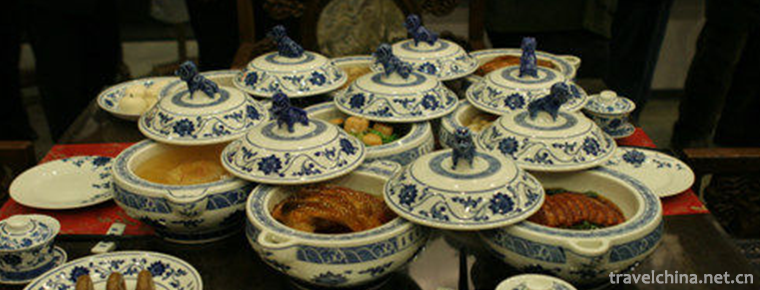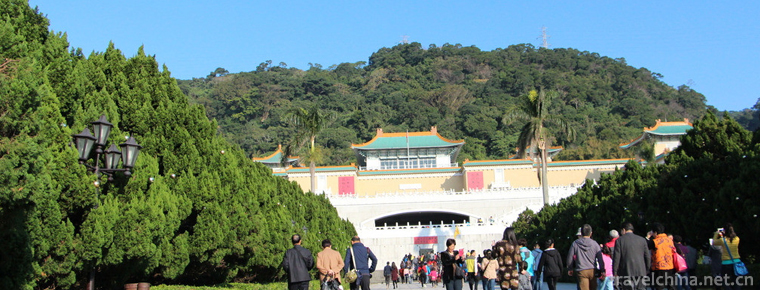2018-10-12

- By ChinaWiki.net
- Chinese Edition
- 2019-07-25
Cuisine Skills of Official Cuisine in Zhili
The cooking skills of official dishes in Zhili, the local folk traditional cooking skills in Baoding City, Hebei Province, is one of the national intangible cultural heritage.
The culinary skill of official dishes in Zhili is a precious cultural heritage of Baoding ancient city. Since the Qing Dynasty and the Republic of China, official cuisine and cooking skills in Zhili have developed rapidly, forming one of the main representatives of northern Chinese cuisine and becoming the main origin and important component of Hebei cuisine.
On May 23, 2011, the cooking skills of official dishes in Zhili were approved by the State Council of the People's Republic of China to be included in the third batch of national intangible cultural heritage lists. Heritage No. _-1.
historical origin
Official cuisine of Zhili originated from folk and noble style. It has both local characteristics and compatibility with the world's food style. It came from ancient times and flourished from the Qing Dynasty to the Republic of China. It is popular in the "Zhili Province" near Beijing Normal University, but it has a special series of cuisine that has influenced the whole northern cuisine.
As the largest city hall in Zhili Province, Baoding has numerous restaurants. In the long hundred years, emperors patrol, dignitaries and dignitaries gather here, giant businessmen gather here, many nationalities live here, guests from the South and the North flow here, and food from all over the world is very rich. At the same time, the feudal privilege of the governor of Zhili has enabled his highly skilled chefs to gather and treasure raw materials, and to integrate the Chinese food culture and cooking skills into one's own system, namely, the official dishes of Zhili.
Technological characteristics
Flavor
Taste is the most important yardstick to distinguish a cuisine. Baoding Huaimao Sweet Noodle Paste has a strong sauce fragrance, which makes Zhili official dishes unique. This sauce is a special product of Baoding House, a sweet noodle sauce. The most important condiment in the cooking process of Zhili official dishes is sweet noodle sauce. Because of this, dishes show dark red metal color, smooth entrance and strong sauce fragrance.
Utensils
Official cuisine in Zhili also has Baiji's unique utensils, which are exquisite in appearance, scientific and practical. The most representative are the hot dish, bowl and calendula. There is a pair of end ears on the upper part of the base of the warm dish. One end ear has a water injection port connected with the closed chamber. When used, hot water is injected through the water injection port, which can keep the dish temperature for a long time even in cold winter. Most of the porcelain tableware of Zhili official dishes are blue and white porcelain products with dignity and restraint.
Technological process
Governor Tofu
The official kitchen of Zhili Supervisory Bureau adopts traditional cooking methods, adding shrimp seeds, dried scallops and other raw materials to re-cook, with a light red color, fresh salty and mellow.
Chinese cabbage brewed with soup
Xushuigong cabbage is selected as the main raw material to brew Chinese cabbage in the soup. It is steamed and tasted. The fragrance of vegetable and meat is integrated into the soup. Then it is injected into the refined soup. It has white color, fresh salty and fragrant taste, plain taste, nourishing stomach and promoting water, relieving fever and irritation.
Li Hongzhang stewed vegetables
Selected sea cucumber, shark's fin, deer tendon, bullwhip, etc. with Ansu tribute cabbage, tofu, bread flour and so on, add one of the three treasures of Baoding Palace Huaimao sweet paste carefully braised.
Chicken Peanut and Prawn
Slaughter chickens, add fresh shrimps in Baiyangdian, and add Huaimao sweet paste.
Inheritance and Protection
Inheritance value
Official cuisine of Zhili originated from the folk, with aristocratic style, local characteristics, compatible with the world's food style, from ancient times came and flourished in the Qing Dynasty to the Republic of China, popular in the "Zhili Province" near the Beijing Normal University, but had a more special series of cuisines that affected the whole northern cuisine. At the same time, Zhili government cuisine is also a successful exploration of the Baoding people's high-end catering culture, which contains rich banquet culture connotation, covering the contents of ancient official cuisine, beautiful implements, beautiful scenery, Miller, beautiful poetry and many other splendid food culture contents. It is worthy of inheriting the essence of traditional culture.
Heritage figures
Liang Lianqi, male, Han, Baoding, Hebei Province. On December 28, 2017, Liang Lianqi was selected as the representative successor of the fifth batch of national intangible cultural heritage representative projects and declared by Baoding City, Hebei Province.
protective measures
On the basis of thousands of old cookbooks and related historical materials from the Ming, Qing and Republic periods, which were appraised as "the greatest of Guinness in the world in Shanghai", the Chinese Zhili Official Cuisine Research Association has successfully excavated and developed more than 400 Zhili Official Cuisines such as "Li Hongzhang Braised Vegetables" and "Jili Jump", and restored the "Hot Plate" of gourmet utensils that have been lost for centuries. In 2006, the cooking skills of official dishes in Zhili were officially selected as the first batch of intangible cultural heritage in Hebei Province, and official dishes in Zhili became the first Chinese dishes to declare intangible cultural heritage and success.
Since the 1980s, the government cuisine in Zhili has been excavated, the state patent application for the government cuisine in Zhili and the application for the intangible cultural heritage in China have been put forward successively, and the first batch of intangible cultural heritage projects in Hebei Province have been recognized. After careful investigation and demonstration by the Chinese Culinary Association, Yulan Xiangbaoding Restaurant Catering Co., Ltd. was officially recognized as the "R&D Base of Official Cuisine in Zhili, China", and became the first R&D Base of Official Cuisine in China. The Baoding Museum full of Zhili culture atmosphere is praised as "an edible museum" by consumers, and Baoding government regards it as a "city card" of ancient city Baoding. It is not only a restaurant, but also a carrier of spreading Zhili culture.
social influence
Important activities
In the afternoon of September 2, 2012, after 48 hours of long-distance travel, more than 3,000 copies of the old recipes of the Ming and Qing Dynasties associated with the "Zhili Official Cuisine" arrived at Zhuhai Customs and were then shipped to Macao. As the sole representative of Hebei cuisine exhibition, these collections will be displayed together with 80 "Zhili Official Cuisine" at the "Third China Catering Exposition" in Macau to show Chinese and foreign tourists the delicacies of Hebei cuisine.

Ask a Question
Your email address will not be published.



0 Questions